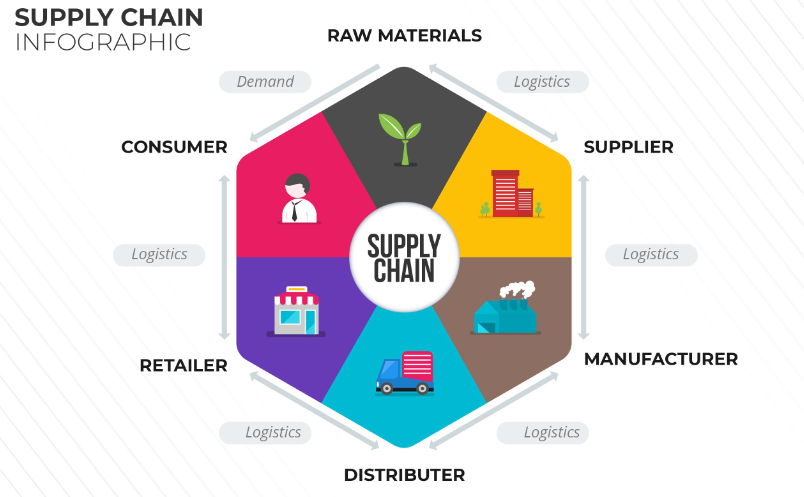Business in the digital age has become increasingly disruptive as the exponential growth in technology has ripped up the conventional playbook. This has helped thrust forward supply chain management as an imperative business component in the digital era.
The arrival of services such as Amazon Prime Now in the US – where shoppers get their items delivered on the same day or within 24 hours – has altered the global business landscape. As retailers in the US grappled with a new competitor, ripples were felt across the globe.
The E-commerce sector, which was already earmarked as the future of retail, was given added impetus as newcomers worldwide took heed of the trend and leveraged new technologies to present offerings to customers that well-established companies were just trying to get a handle on. The appetite for online shopping was fuelled by consumers who were seduced by the convenience of shopping from the comforts of their homes.
Meanwhile, the Covid-19 pandemic last year turbocharged the E-commerce industry where “10 years of e-commerce growth happened in just 90 days”, according to a study by Shopify.
It is of utmost importance that companies have robust supply chain management systems to address modern-day business demands. Supply chain management involves the combination of both a company’s internal entities such as sales, manufacturing and distribution and external partners such as suppliers and end customers.
Supply chains in the digital age have become longer, stretching worldwide. When a failure occurs, companies often incur the wrath of customers irate at not having received their purchases as promised. In July 2019, during the peak sales season, the online retailer Asos reported a problem in its warehouse, costing it millions in losses.

It is perplexing to note that a recent study by Reuters revealed many companies are still not adequately equipped with efficient supply chain management systems. It was shocking to note that some companies in the survey were still operating on legacy systems.
Reuters, who interviewed nearly 400 supply chain executives from companies across a broad range of industries, revealed that “22% said they use Excel to plan operations”. As we know, spreadsheets aren’t exactly specialised to handle digital-age logistics.
Among other startling revelations – “55% of respondents said they still use manual processes to make planning decisions, with 28% saying that their entire decision making process is manual and lacks any system support”, and 15% of respondents said “their systems did not have mobile access”, a necessity at present, and even more so in a fluctuating climate.
Below are some of the other alarming revelations by the respondents:
- 44% think their systems are not well integrated with other systems.
- 43% say their system lacks automation planning/optimisation.
- 41% report that they cannot put in all the complex rules and exceptions they need.
- 32% cannot test multiple scenarios.
- 28% note their system does not link warehouse and logistics operations.
- 26% experience difficulties in collaborating with multiple partners.
In a Covid-19-ravaged world, it is incumbent upon companies to undertake digital transformation efforts in order to survive and thrive. Inventory management is not anymore a guessing game. The ability to forecast demand using best-in-class technology will allow companies to operate efficiently.
Research shows that investment in supply chain technologies has a payback time of less than two years. Meanwhile, a McKinsey study suggests that “companies that aggressively digitise their supply chains can expect to boost annual growth of earnings before interest and taxes by 3.2% – the largest increase from digitising any business area – and annual revenue growth by 2.3%”.
Below we look at some of the benefits that the supply chain management of businesses can reap from undertaking digital transformation efforts that entails solutions such as migrating to the cloud and using cloud-based ERP systems.
Unified real-time view of business processes
Suppose you are an omnichannel retailer, for instance. In that case, the objective is to provide your customers with a seamless shopping experience across all platforms, regardless of whether they are shopping in a physical store or digital channel, and giving them the privilege of getting their products or services in the method that is most convenient to them.
Cloud ERP systems offer a unified and real-time view of all your customers and their transactions. This allows you to respond quickly to customer requests. Track and trace systems that send detailed updates about orders throughout the lead time also allows you to keep your customers updated on the status of their orders.

A unified view also gives you total visibility of all your warehouses. This ensures that you are always kept informed on your inventory levels, allowing you to make necessary adjustments.

Analytical Demand Planning
Supply chain planning is a delicate process of trying to match supply and demand, potentially across the globe, in extremely uncertain times. Cloud ERP systems ensure you get the right combination of cost control, lead times and services level.
Cloud ERP solutions also allow businesses to calculate and predict demand using highly advanced tools. This is especially important at moments like the present, where the business world is plagued with uncertainty.
Low-code/No-Code Easy Integration
In a borderless business environment, transactions take place worldwide. For instance, if you are a third-party logistics provider (3PL), chances are you deal with a disparate bunch of systems to accommodate different retailers.
One of the great advantages of modern cloud-based systems is that they provide easy integrations with external sources, often involving little, to no coding. This helps 3PL companies to save a lot of time and money in not having to hire an in-house IT team to work on coming up with solutions for every different system they encounter in their transactions.
Scalability
Solutions in the digital business environment such as cloud ERP systems are built on infrastructure that is flexible, allowing businesses to scale at their convenience and when necessary. This allows your inventory system to expand as your business does.
This also allows businesses to undertake digital transformation in a structured and organised manner where the system can easily accommodate their growth requirements when they feel the need to.


